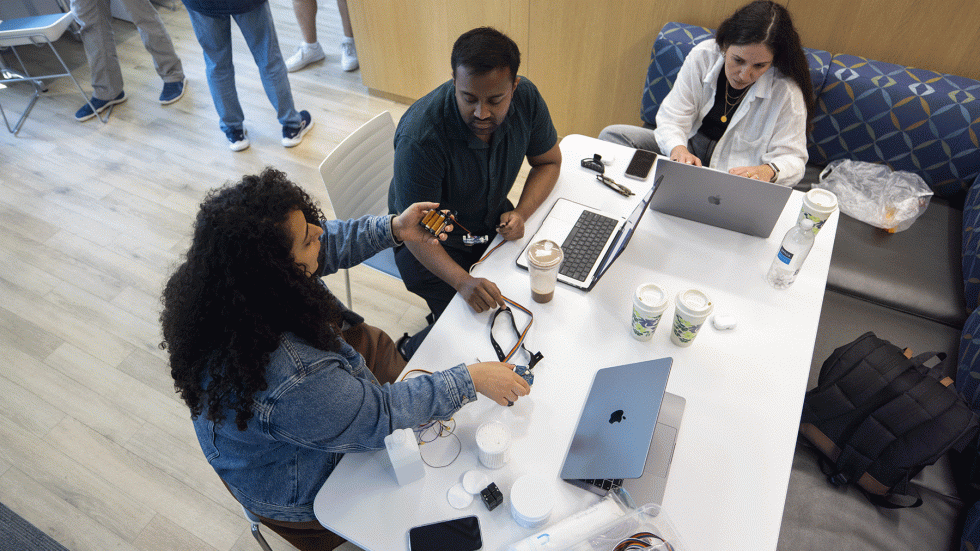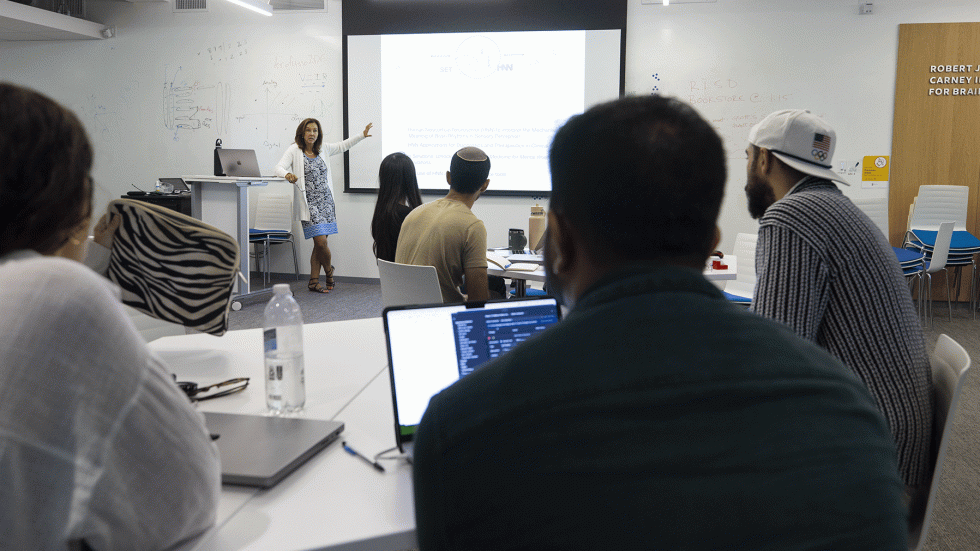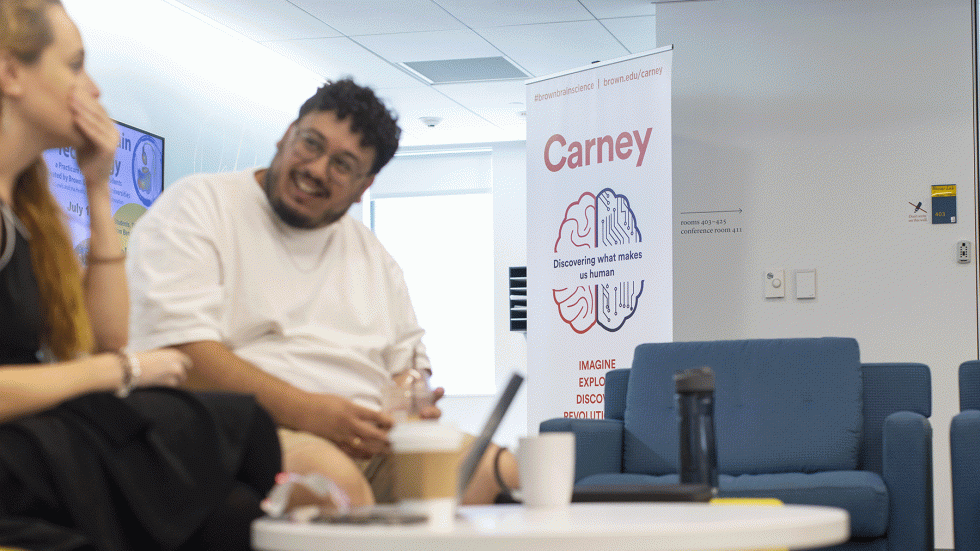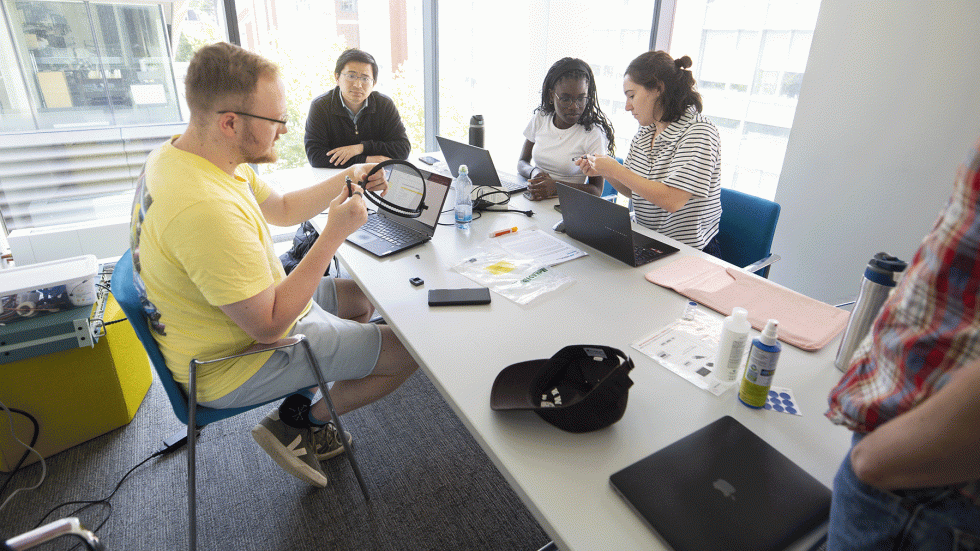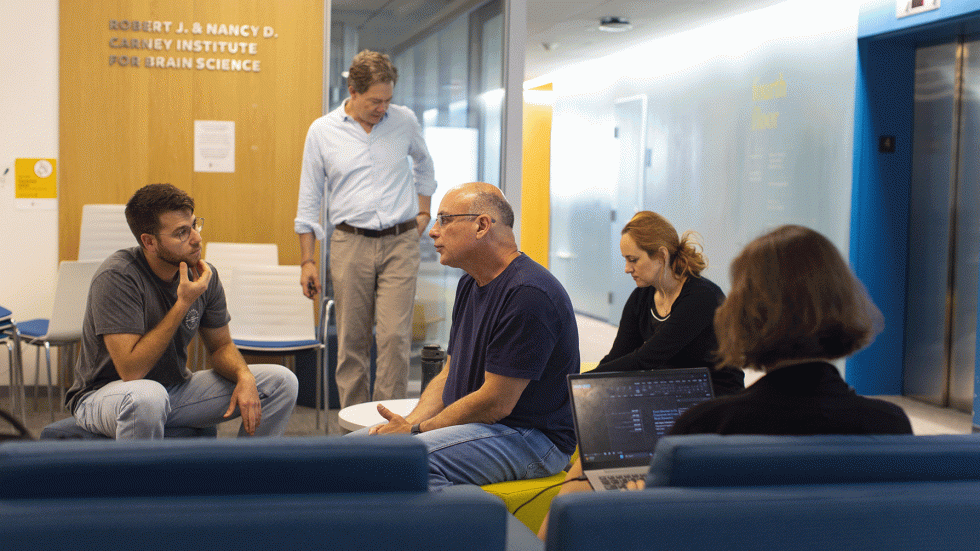PROVIDENCE, R.I. [Brown University] — On a late July afternoon, the Carney Institute for Brain Science at Brown University was buzzing with activity. Groups of students camped out in corners and conference rooms, surrounded by screens and circuit boards, electric wires and plastic prototypes. At one point, a student burst from behind a door and sprinted to the 3D printing station, catching others off-guard.
Each group of four or five consisted of graduate students from Brown University and Ben-Gurion University, a public research university in Beersheba, Israel, and all have an interest in neuroscience. They were on College Hill as part of a unique summer experience called the Embodied Brain Technology Practicum, hosted by the Carney Institute. During the 10-day program, they learned strategies for idea generation, the basics of electroencephalogram (EEG) and reading body signals, the computational aspects of brain science and neurotechnology, and principles of cellular biological dynamics that create behavior.
The goal was for the students to combine their expertise, innovation and enthusiasm to invent and pitch a new startup as part of a “Shark Tank”-style competition judged by Brown faculty and external investors. However, sharks aren’t quite representative of this spirited and collaborative event, said neuroscience professor Christopher Moore, one of the organizers of the practicum — so the pitch event is referred to as a “dolphin tank.”
The co-directors believe that a two-week experience is one of the best ways to inspire people.
“The practicum offers a great learning environment as well as a great community-building environment,” said Moore, associate director of the Carney Institute. “Science is so damn hard, and feeling a connection with others is often what gets you through. Within the span of two weeks you usually push yourself and others to learn so many new things and try bold experiments.”
The students were charged with using neuroscience and technology to come up with ideas that improve people’s lives, Moore said. They are provided with tools for success, including instruction in how to use an Arduino programmable circuit board that can be connected to various sensors, LEDs, motors and other components; access to a 3D printer; and nearly 24-hour access to the workshop space.
One group worked on a dashboard device that can detect drowsiness in drivers; another designed a headset to prevent elderly people from falling; a third came up with a game to accelerate motor learning for those who want or need to become ambidextrous.
“The really notable part of this practicum is the hands-on learning, creating, brainstorming and idea generation,” said Oren Shriki, an associate professor in Ben-Gurion University’s Department of Cognitive and Brain Sciences.
